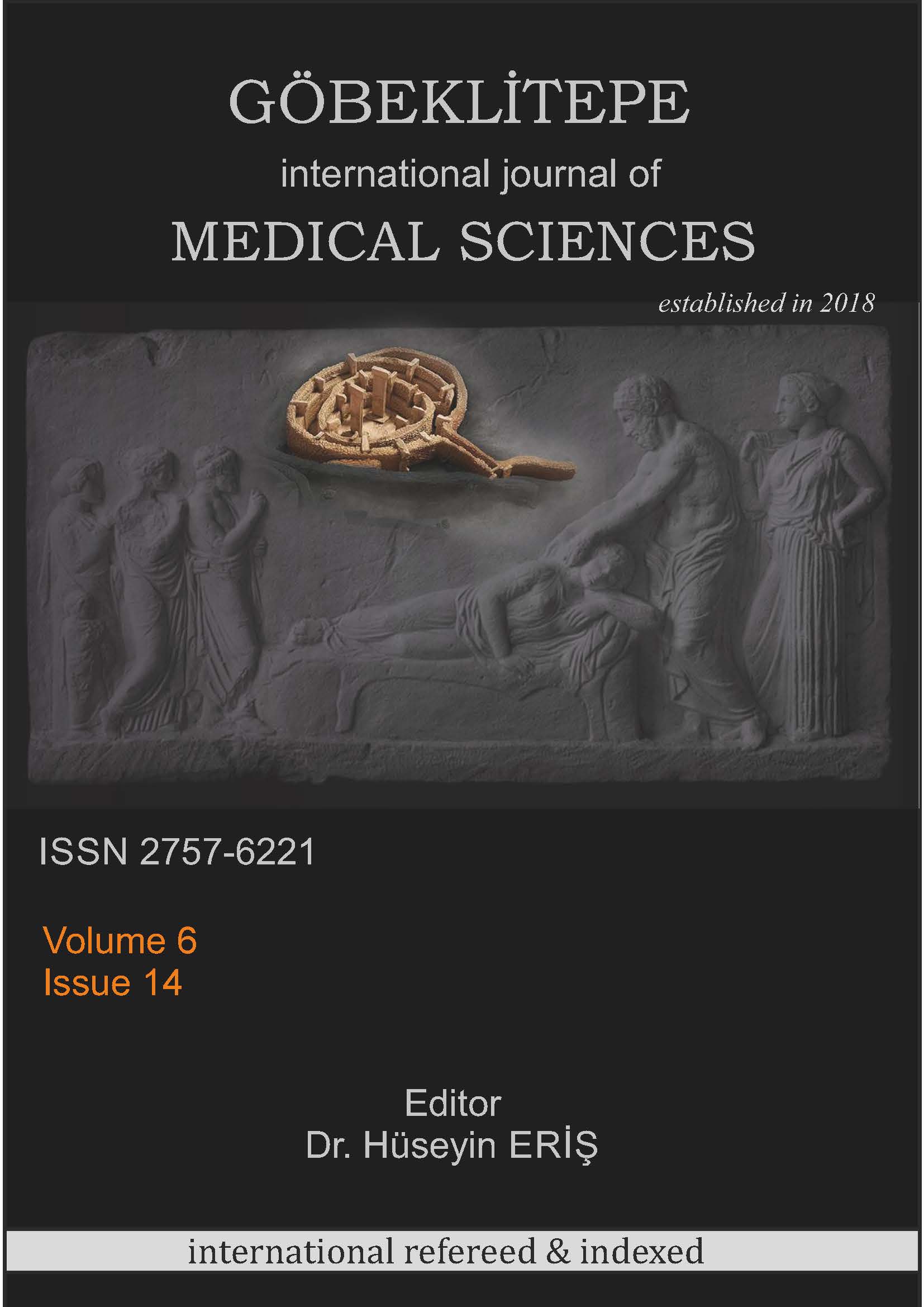Evaluation of Knowledge and Behavior of Mothers with 0-1 Year Old Babies About Sudden Infant Death Syndrome Risk Factors
DOI:
https://doi.org/10.55433/gsbd/263Keywords:
sudden infant death syndrome was insufficient. Keywords; SuddenAbstract
This study was conducted to evaluate the knowledge levels of mothers with babies aged 0-1 about risk factors for Sudden Infant Death Syndrome (SIDS) and to determine its relationship with socio-demographic variables.The research was conducted with 375 mothers who had babies between the ages of 0-1. The sample of the study was determined by the stratified simple random sampling method. Data were collected with questions created by the researchers. data were analyzed in spss program. While more than half of the mothers (64.3%; n=241) stated that the house is heated by a stove, 94.7% (n=355) stated that sudden infant death was not observed in their family and relatives, and 5.3% (20) stated that It was determined that it was defined as sudden infant death. It was determined that 52.5% of the mothers (n=197) received information/training regarding pre/postnatal baby care. It was observed that mothers who stated that they received information/training regarding baby care received this information/training from more than one source, and the highest rate of this source (97.0%; n=191) was nurses and midwives. Many interventions that may pose a risk for mothers in terms of sudden infant death syndrome (such as placing the baby in the wrong position, covering the baby's face with a cheesecloth while sleeping, laying the baby on its side while sleeping, wrapping the baby tightly in a blanket, keeping foreign materials that the baby can put into its mouth while the baby is sleeping, the bed where the baby sleeps, sudden infant death syndrome) It was determined that they were preferred in a way that would pose a risk to the. It was understood that mothers' knowledge about sudden infant death syndrome was insufficient.
References
Çavuşoğlu H. (2013). Çocuk Sağlığı Hemşireliği Kitabı ,Onuncu Baskı ,Ankara, Sistem Ofset Basımevi,Merdiven Ajans ISBN:975-94996-3-0 975-94996-5-7. 101-102.
Dünya Sağlık Örgütü/ World Health Organization(2012) „Born Too Soon The Global Action Report on Preterm Birth‟, WHO, 1-2.
Sungur İ, Çöl M. (2016) Mortalite ile ilgili önemli ölçütlerin dünyadaki ve Türkiye‟deki durumu;Dahili tıp bilimleri, Ankara üniversitesi tıp fakültesi mecmuası, 69(1) DOI:10.1501/Tıpfak-000000907: 1-5.
World Health Organization.(2015) MillenniumDevelopment Goals (MDGs). http://www.who.int/entity/mediacentre/factsheets/fs290/en/index.htm (08.02.2016).
T.C. Türkiye İstatistik Kurumu TUİK 2015 T.C. Türkiye İstatistik Kurumu Başkanlığı.http://www.tuik.gov.tr/PreHaberBultenleri.do?id=21522 (28.04.2016).
T.C.Türkiye İstatistik Kurumu TUİK 2016 T.C.Türkiye İstatistik Kurumu Başkanlığı http://www.tuik.gov.tr/PreHaberBultenleri.do?id=24649/ (05.2017).
Shapiro-Mendoza CK, Kimball M, Tomashek KM (2009),US infant mortality trends attributable to accidental suffocation and strangulation in bed from 1984-2004: are rates increasing? Pediatrics; 123(2): 533.
Murphy SL, Xu J, Kochanek KD. Deaths: Final Data for 2010. National Vital Statistics Reports2013, 61(4): 1-117.
Heron M, Sutton PD, Xu J, Ventura SJ, Strobino Dm, Guyer B. (2007) Annual summary of vital statistics: Pediatrics 2010 ;125:4-15.
Perk Y. (2011) „Ani bebek ölüm sendromu (SIDS)‟, Eds. EkĢi A, Nobel Tıp Kitapevi, İstanbul. 14-23.
Centers for Disease Control and Prevention web sitesi Sudden Infant Death Syndrome. 2015.http://www.cdc.gov/SIDS/ (3.10.2016).
World Health Organization Newborn death and illness. http://www.who.int/pmnch/media/press_materials/fs/fs_newborndealth_illness/en/ (02.01.2017).
United Nations International Children's Emergency Fund (2009) „Türkiye‟de 5 Yaş Altı Ölüm Hızında Azalma: Bir Durum Araştırması‟, Unisef, Türkiye.
Willinger M, James LS, Catz C. (1991) Defining the sudden infant death syndrome (SIDS): Deliberations of an expert panel convened by the National Institute of Child Health and Human Development. Pediatr. Pathol; 11(2): 677-84.
American Academy of Pediatrics. (2011)Task force on sudden ınfant death syndrome. SIDS and other sleep-related ınfant deaths: expansion of recommendations for a safe ınfant sleeping environment. Pediatrics; 128(5): 1030-1039.
Harper RM, Kinney HC, Fleming PJ, Thach BT. (2000) Sleep influences on homeostatic functions: implications for sudden infant death syndrome. Respir Physiol;119:123-32.
Goberman AM, Johnson S, Cannizzaro MS, Robb MP. (2008) The effect of positioning on infant cries: ımplications for sudden infant death syndrome. International Journal of Pediatric Otorhinolaryngology; 72: 153-165.
Corwin MJ. (2015) Sudden infant death syndrome: Risk factors and risk reduction strategies. Up to date.
Hauck FR, Moore CM, Herman SM, Donovan M, Kalelkar M, Christoffel KK, Hoffman HJ, Rowley D. (2002) The contribution of prone sleeping position to the racial disparity in sudden ınfant death syndrome: the Chicago ınfant mortality study. Pediatrıics; 110(4): 772-780.
Erdoğan Ç. (2015) “Denizli il merkezinde 0-12 ay arası bebeği olan annelerin ani bebek ölüm sendromu konusunda riskli davranışlarının belirlenmesi” Hemşirelik Programı Yüksek Lisans Tezi, Pamukkale Üniversitesi Sağlık Bilimleri Enstitüsü, Denizli
Çalışır H, Özvurmaz S, Tuğrul E. (2007) “Aydın il merkezindeki 0-11 aylık bebeklerde ani bebek ölüm sendromu ile ilgili risk faktörlerinin incelenmesi” C.Ü. Hemşirelik Yüksekokulu Dergisi; 11(2): 7-17.
Alparslan Ö, Uçan S. (2011)”Bir sağlık ocağı bölgesindeki bebeklerde ani bebek ölümü sendromu ile ilgili risk faktörlerinin belirlenmesi.” Hemşirelikte Araştırma Geliştirme Dergisi; 1(2): 25-34.
Yıkılkan H, Ünalan P, Çakır E, Ersu RH, Cifcili S, Akman M, Uzuner E. (2011) Sudden infant death syndrome: how much mothers and health professionals know. Pediatrics International; 53(1): 24-28.
Çelik Y, Meral C, Öztürk B, Purisa S. (2010) “Çocuk polikliniğinde izlenen bebeklerin uyuma pozisyonlarının değerlendirilmesi.” Çocuk Dergisi; 10(4):179-182.
Gökçe, S., Baysal, S.U. (2004) Ani Bebek Ölümü Sendromu, İstanbul Tıp Fakültesi,mecmuası 67:1.
Geib LT, Aerst D, Nunes ML. (2006) Sleep practice and sudden infant death syndrome: A new proposal for scoring risk factors. Sleep; 29(3): 1288 -1294.
Nelson EA, Taylor BJ. (2001) “International child care practices study:infant sleep position and parental smoking.”Early Hum Dev;64(1): 7-20
Pillitteri A. (1999) Child Health Nursing Care of The Childbearing Family, Lippincott Company, London, Philadelphia, 130-172.
Erçin S. (2012) „Ani Bebek Ölümü Sendromu (SIDS)‟, Hayata Prematüre Başlayanlar, Eds. OkumuĢ N, Mrk Baskı ve Tanıtım Hizmetleri, Ankara, 47-79.
Coleman-Phox K, Odouli R, Li DK. (2008) “Use of a fan during sleep and the risk of sudden ınfant death syndrome.” Arch Pediatr Adolesc Med; 162(10): 963-968.
Çetin T, Altun AB, Kerkez B, Tatlı S, Özer C. (2012) Hatay ilinde 2009 ve 2010 yıllarında bebek ölüm hızları ve nedenleri. Ege Journal of Medicine; 51(2):111-116
Mitchell EA. (2007) Recommendations for sudden infant death syndrome prevention: a discussion document. Archives of Disease in Childhood; 92(2): 155- 159.
Carpenter R, McGarvey C, Mitchell EA, Tappin MD, Vennemann MM, Smuk M, Carpenter JR. (2013) Bed sharing when parents do not smoke: is there a risk of sudden infant death syndrome? An individual level analysis of five major case– control studies. BMJ; 3(2): 1-11
Blair PS, Heron J, Fleming PJ. (2010). Relationship between bed sharing and breastfeeding: longitudinal, population-based analysis. Pediatrics; 126(5): 1119- 1126
Pansy J, Zotter H, Sauseng WSS, Lang U, Kerbl, R. (2008). Pacifier use: What makes mothers change their mind? Acta Pædiatrica; 97(7): 968-971.
Victora C, Behague D, Barros F, Olinto M, Weiderpass E. (1997). Pacifier use and short breastfeeding duration: cause, consequence, or coincidence? Pediatrics; 99(3): 445-453
TNSA2013 http://www.hips.hacettepe.edu.tr/tnsa2013/rapor/TNSA_2013_ana_rapor.pdf (11.04.2017).
Luijk MP, Mileva-Seitz VR, Jansen PW, IJzendoorn MH, Jaddoe VW, Raat H. (2013). Ethnic differences in prevalence and determinants of mother–child bedsharing in early childhood. Sleep Medicine; 14(11): 1092-1099
Downloads
Published
How to Cite
Issue
Section
License
Copyright (c) 2024 Göbeklitepe Sağlık Bilimleri Dergisi

This work is licensed under a Creative Commons Attribution 4.0 International License.




